Drug-induced hyperploidy stimulates an antitumor NK cell response mediated by NKG2D and DNAM-1 receptors
- PMID: 27057443
- PMCID: PMC4801427
- DOI: 10.1080/2162402X.2015.1074378
Drug-induced hyperploidy stimulates an antitumor NK cell response mediated by NKG2D and DNAM-1 receptors
Abstract
Formation of polyploid or aneuploid cells is a pathological hallmark of malignant tumors. Cell cycle checkpoint mechanisms play a crucial role in ensuring genomic integrity during mitosis, avoiding the generation of aneuploid cells. Additionally, cancer cell DNA ploidy is subjected to extrinsic controls operated by activation of adaptive immune responses mediated by T cells. NK cells exert a central role in the innate anticancer immunity; however, the mechanisms involved in the recognition of tumor cells by NK cells have not been fully elucidated. Herein, we report that drug-induced polyploidy in cancer cells activates antitumor responses mediated by NK cells. Thus, hyperploidy-inducing chemotherapeutic agents strongly upregulate the tumor expression of ligands for the NK cell activating receptors NKG2D and DNAM-1. Drug-induced hyperploidy modulated the repertoire of activating receptors and the cytokine profile of NK cells, rendering tumor cells more susceptible to NK cell-mediated lysis through the activation of NKG2D and DNAM-1 receptors. In addition, hyperploidization stimulated the production of IL-2 by CD4 T cells, which induced NK cell proliferation and activity. The stimulation of MICA, a key NKG2D ligand, in hyperploid cells was mainly mediated by ATM protein kinase. Likewise, pharmacological inhibition of key regulators of endoplasmic reticulum stress in certain cell models supports a role for this pathway in NKG2D ligand upregulation. Overall, our findings indicate that, besides the cytotoxic effect on tumor cells, the therapeutic activity of anti-mitotic drugs may be mediated by the induction of a coordinated antitumor immune response involving NK and T cells.
Keywords: ATM; Calreticulin; DNA damage; DNAM-1; ER stress; MICA; NKG2D; T cells; cancer immunosurveillance; hyperploidy; natural killer cells.
Figures
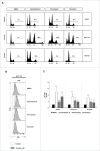
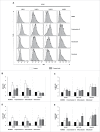
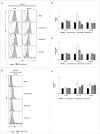
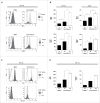


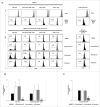

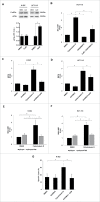
References
-
- Davoli T, de Lange T. The causes and consequences of polyploidy in normal development and cancer. Annu Review Cell Dev Biol 2011; 27:585-610; PMID:21801013; http://dx.doi.org/10.1146/annurev-cellbio-092910-154234 - DOI - PubMed
-
- Gordon DJ, Resio B, Pellman D. Causes and consequences of aneuploidy in cancer. Nat Rev Genet 2012; 13:189-203; PMID:22269907; http://dx.doi.org/10.1038/ngr3123 - DOI - PubMed
-
- Torres EM, Sokolsky T, Tucker CM, Chan LY, Boselli M, Dunham MJ, Amon A. Effects of aneuploidy on cellular physiology and cell division in haploid yeast. Science 2007; 317:916-24; PMID:17702937; http://dx.doi.org/10.1126/science.1142210 - DOI - PubMed
-
- Williams BR, Prabhu VR, Hunter KE, Glazier CM, Whittaker CA, Housman DE, Amon A. Aneuploidy affects proliferation and spontaneous immortalization in mammalian cells. Science 2008; 322:703-9; PMID:18974345; http://dx.doi.org/10.1126/science.1160058 - DOI - PMC - PubMed
-
- Torres EM, Williams BR, Amon A. Aneuploidy: cells losing their balance. Genetics 2008; 179:737-46; PMID:18558649; http://dx.doi.org/10.1534/genetics.108.090878 - DOI - PMC - PubMed
Publication types
LinkOut - more resources
Full Text Sources
Research Materials
Miscellaneous
